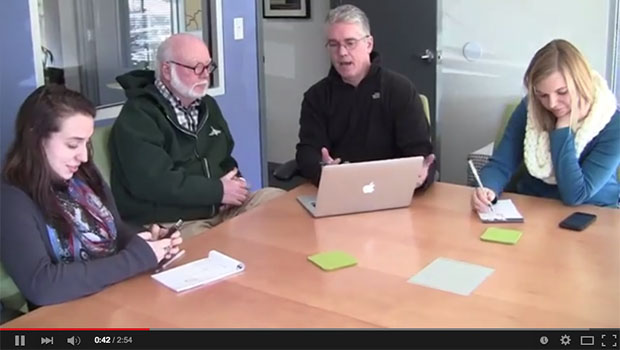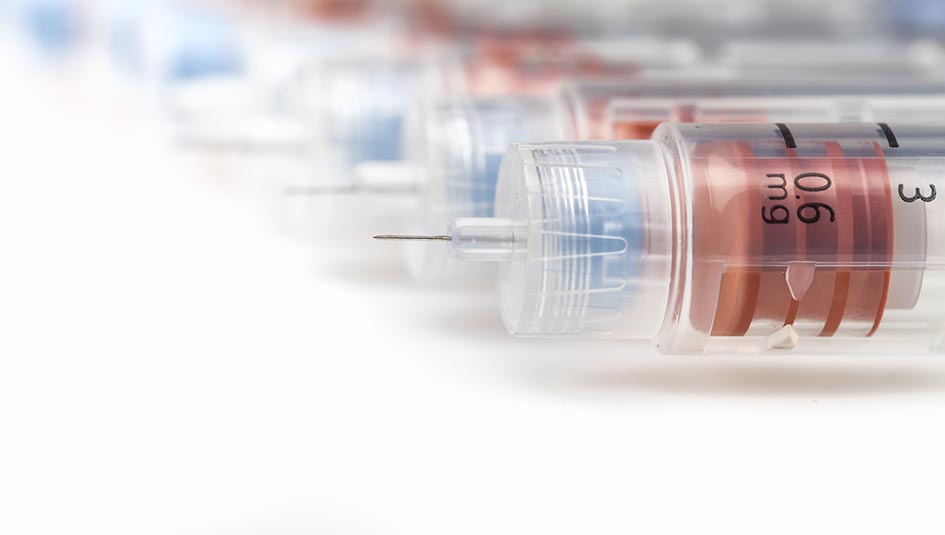6 Possible Ways to Stop Type 1

In their annual report, the Diabetes Research Institute Foundation recently highlighted their Top 6 research breakthroughs in 2014:
Better Islet Coating
Dr. Alice Tomei, DRI assistant professor of surgery and cell transplantation, successfully demonstrated a viable way of coating insulin-producing islet cells. A study provided evidence that Dr. Tomei’s team had devised a way of encasing islet cells in thin, uniform capsules that would protect the cells during transplantation. This encapsulation doesn’t appear to interfere with the transplanted cells’ ability to produce insulin. The study was published in Proceedings of the National Academy of Sciences.
Skip the Pancreas, Go for the Omentum
The DRI is working to bypass the pancreas by transplanting islets in the omentum fold of the abdomen. Researchers chose the omentum because it is surrounded by blood vessels, surgically accessible, and has similar insulin-draining components as the pancreas. The FDA has approved Phase I/II trials to place human donor islet cells housed within “biodegradable scaffolds” into the omentum. A few patients have already passed the transplant screening process and have been chosen as subjects for the trials.
Low-Dose IL-2 Stimulates Insulin Production
A handful of doctors from the DRI have been collaborating with Dr. David Klatzmann to determine how low-dose IL-2 (Interleukin) therapy might help patients with Type 1 diabetes. (IL-2 is a protein molecule that regulates white blood cell activity.) Researchers hope to use this therapy to prevent the total loss of insulin-producing functionality in the pancreas at the beginning of Type 1 diabetes. In research, IL-2 has proven to both be safe for patients, and promote the growth of Regulatory T cells, which keep immune system cells in the body from attacking healthy cells. New trials are beginning.
Cells In Umbilical Cords May Protect Insulin-Producing Cells
Dr. Luca Inverardi and his team are trying to determine if Myeloid-Derived Suppressor Cells (MDSCs) could work to protect insulin-producing cells in the pancreas. MDSCs function to protect tumors in the body by mobilizing Regulatory T cells around the tumor. Previously, MDSCs could only be harvested in bone marrow, but researchers discovered a subgroup of MDSCs (fibrocyte-MDSCs) in the umbilical cord fluids of newborn babies. The new f-MDSCs, are highly immunosuppressive and are easy to grow, expand, and keep alive in labs. Researchers hope to test the ability of f-MDSCs to protect transplanted insulin-producing cells in people with Type 1.
Smad 7 Protein May Prevent New-Onset Diabetes
Dr. Peter Buchwald, DRI’s director of drug discovery, is developing a possible therapy focusing on a newly discovered signaling pathway in the nervous system that causes autoimmune destruction of insulin-producing cells. Dr. Buchwald and his team have modeled how blocking this pathway’s signals with a protein-coding gene called Smad 7 might block the destruction of islet cells in new-onset diabetes. Evidence gathered also supports Buchwald’s theory that using Smad 7 could encourage islet cell regeneration.
FDA-Approved Compound Used to Create Endocrine Cells
A DRI research team led by Drs. Juan Dominguez-Bendala and Ricardo Pastori has successfully converted non-insulin-producing human exocrine cells into insulin-producing endocrine cells using a FDA-approved molecule. In the past, similar studies have converted exocrine cells into endocrine cells using gene manipulation, but this method doesn’t work well with diabetes therapies.
Insulin Nation will monitor the progress of these therapies as they make their way through the FDA trials process. You can read the full report in the 2014 Diabetes Research Institute Foundation Annual Report.
Thanks for reading this Insulin Nation article. Want more Type 1 news? Subscribe here.
Have Type 2 diabetes or know someone who does? Try Type 2 Nation, our sister publication.







